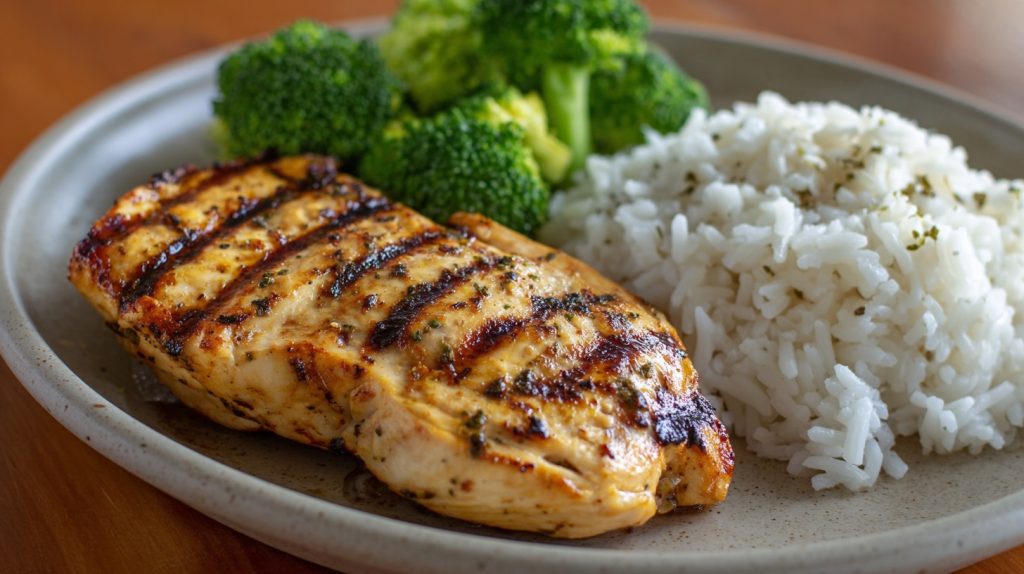If you’ve ever felt frustrated or even a little embarrassed about being a picky eater, you’re not alone.
Maybe your food choices feel limited. Maybe vegetables are a hard no. Or maybe you want to eat better, but most healthy foods don’t appeal to you.
This can feel like a dead end. But it’s not.
You’re not stuck like this forever.
And no, you don’t have to just “grow out of it” or force yourself to eat things you hate.
There’s a reason you eat the way you do. And there’s a way to shift it.
What Picky Eating Actually Is
Being a picky eater isn’t about being lazy or difficult. It’s a set of patterns.
You’ve got strong likes and dislikes. You avoid certain textures or smells. Maybe you eat the same meals all the time, and trying something new feels uncomfortable or even stressful.
For some people, it’s extreme. For others, it’s just enough to make healthy eating feel hard.
Either way, it’s a pattern that can change – if you understand where it comes from.
Why You Became a Picky Eater
Let’s break down a few common reasons. Most people have a mix of these:
1. Your early experiences with food
If you were given a limited variety of foods as a kid, your palate didn’t get a chance to grow. Or maybe meals came with pressure: “just one more bite,” “you can’t leave the table until…” That can create tension around food that sticks.
2. Negative associations
Sometimes it’s one bad experience. Choking, gagging, throwing up after eating something. Your brain connects that food to danger. That’s not drama – it’s how your nervous system protects you.
3. Sensory sensitivities
Some people are more sensitive to textures, smells, temperatures, or how food looks. Slimy, mushy, bitter – these can all feel more intense. That’s not picky. That’s sensory overwhelm.
4. Comfort and control
If food is one of the only things you feel in control of, you might cling to the things that feel safe. Especially during stress, anxiety, or change.
5. Habit and routine
Sometimes it’s just repetition. You eat the same things, you get used to them, and anything else feels “off.” Your brain starts to treat familiar as safe and unfamiliar as bad.
Why Just “Trying Harder” Doesn’t Work
If you’ve ever been told to “just eat it” or “get over it,” you already know this approach doesn’t work.
Forcing food usually makes things worse.
You might feel pressured, anxious, or even more disgusted. You might eat it to be polite or prove a point, but it doesn’t change how you feel inside.
Real change comes from curiosity and safety, not pressure.
How to Start Changing It
Here’s what actually works. No tricks. Just a new approach.
1. Start with curiosity
Instead of saying “I hate this,” try asking:
- What exactly don’t I like about this?
- Is it the taste? Texture? Smell? Temperature?
- Is it how it’s prepared?
The more specific you get, the more options you have to work with. Maybe it’s not all broccoli – just steamed broccoli. That’s useful info.
2. Choose one food to work on
Don’t overhaul everything. Pick one food you’d like to get more comfortable with. Maybe it’s something you’ve avoided but are open to trying again.
Start small:
- Look at it.
- Smell it.
- Touch it.
- Take a tiny bite.
You don’t have to eat a full portion. You’re just building tolerance, step by step.

3. Use “bridge” foods
Pair a new or challenging food with something you already like.
Example:
- Shredded carrots inside a wrap instead of plain
- Roasted veggies with cheese on top
- Smoothies with small amounts of spinach or avocado blended in
This helps you ease into new foods without a big shock to your system.
4. Make it low-pressure
Don’t try new foods when you’re starving, stressed, or in a rush. Pick a calm moment. Give yourself permission to stop if it doesn’t feel right.
The goal is to feel safe and in control, not forced.
5. Notice your wins (even small ones)
- You smelled it without pulling away? That’s progress.
- You took a bite and didn’t hate it? That’s a win.
- You added a new food to your rotation? Big deal.
You’re not trying to love every food. You’re just opening the door to more options.
Reframe Your Identity
One of the most powerful things you can do?
Stop calling yourself a picky eater.
It reinforces the pattern. It becomes part of how you see yourself.
Try this instead:
- “I’m someone who’s working on expanding what I eat.”
- “I’m learning how to enjoy more foods.”
- “I’m building new food habits.”
It might feel awkward at first, but it matters. How you talk about yourself shapes what you do next.
Final Thoughts
You don’t need to love every vegetable.
You don’t have to eat kale salads or raw carrots if they make you gag.
But you do deserve a way of eating that gives you energy, supports your body, and doesn’t feel like a constant battle.
You can expand your food preferences, one small step at a time.
It’s not about changing everything overnight. It’s about learning, experimenting, and giving yourself a real chance to try again.
Start with one food. Stay curious. And drop the pressure.
That’s how change actually happens.

